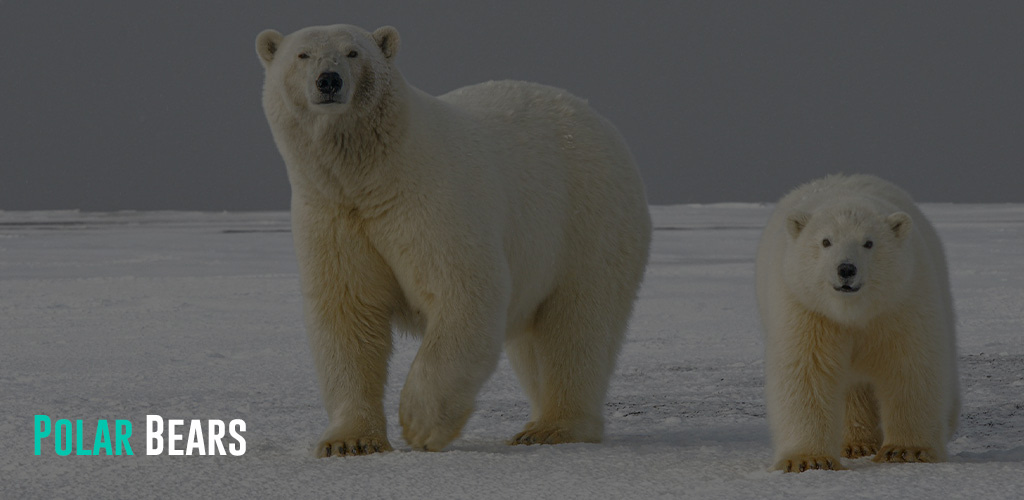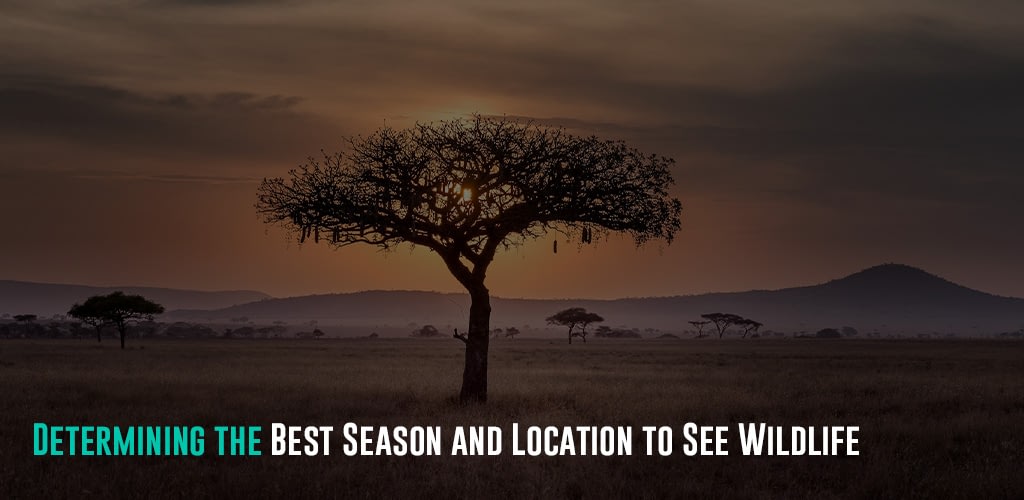Exploring wildlife is a unique experience everyone should experience at least once. From seeing a majestic lion moving through the jungles to watching rare birds soaring through azure skies, there’s so much you can explore. However, planning a wildlife trip also has a deeper purpose. When you create a wildlife trip planner and embark on a journey, you become not just a spectator but a part of the environment. You can closely witness animals in their natural habitat, explore different types of vegetation, and marvel at the beauty of mother nature.
Each moment spent in the presence of wildlife is an opportunity to appreciate nature. So, now that you know why plan a trip to see wildlife, the question is – how can you plan the best wildlife trip? Well, that’s what this wildlife trip planner is all about. Read on to learn everything about planning an enriching and exciting wildlife trip.
Featured Image Source
Understanding the Unpredictable Nature of Wildlife
If there’s one word that can accurately describe wildlife, it’s unpredictable. So, before you start with your wildlife trip planner, it’s vital to understand the unpredictable nature of wildlife.
Nature and animals don’t follow the rules made by humans. They operate on their own terms, which is often unpredictable and challenging. From serene moments like seeing beautiful deer living their best lives in a forest to close encounters with predators, anything can happen when exploring wildlife.
As a wildlife enthusiast, understanding and embracing this unpredictability is essential. Because if you aren’t well aware and well-prepared, a lovely trip can quickly become a disaster. Make sure to do enough research about the vegetation, wildlife, and climate of the area you are planning to explore. The best wildlife trip planner should always include wildlife safety tips.
Further, make sure to have patience. Nature follows its own timeline. So, being patient is necessary while you wait for the perfect time to spot a herd of elephants or a flock of rare flamingos taking their daily walk.
Wildlife Trip Planner: How to Prepare
- Choose Your Destination: Begin by researching the destination thoroughly. Choose a destination that aligns with your interests and budget. For example, if you want to see African Elephants, leopards, zebras, or giraffes, National Parks and safaris in Kenya can be a top choice. Similarly, if you want to explore the mountains and animals like grizzly bears, mountain lions, or moose, destinations like Yellowstone National Park in the USA might be the best choice.
- Find Out About the Best Wildlife Tours in the World: There are several top-tier wildlife tours in the world that can help you have a fantastic trip with minimal planning on your side. All you have to do is sign up for them, pay the price, and pack your packs. Some of the best wildlife tours in the world you can sign up for include – The Galapagos Islands tour, the Big Five safari in Africa, etc.
- Learn About the Destination: Once you have decided on the destination, consider factors such as the season, climate, and terrain to pack accordingly. Make sure to research the best time to visit and how much you’d need to spend on the entire trip to come up with a suitable budget.
- Pack Appropriately: Carrying the right gear for the journey is vital. Invest in some sturdy hiking boots and top-quality clothing based on the climate. Some other essentials to carry include a wide-brimmed hat, sunglasses, sunscreen, insect repellent, a refillable water bottle, common medications, etc.
- Sign Up for Wildlife Conservation Tours: You can also consider signing up for wildlife conservation tours that prioritize ethical practices and help in the preservation of natural habitats. It is a fantastic way to see several rare animals to see in the world while respecting the environment.
- Follow Wildlife Safety Tips: Make sure to follow wildlife safety tips to ensure a memorable and secure trip. Some common tips to follow include maintaining a safe distance from animals, respecting their space, and avoiding sudden movements. Stay vigilant at all times, especially in areas with potential wildlife encounters. Further, ensure to never approach or attempt to feed wild animals.
- Practice Responsible Tourism: Each moment spent in the presence of wildlife is an opportunity to appreciate nature. However, you must practice responsible tourism and closely follow the Leave No Trace practice. Respect the natural environment and its inhabitants. Adhere to designated trails, avoid disturbing wildlife, and refrain from littering.
Consulting Rangers and Guides with Experience
When going into the untamed and unpredictable wilderness, having proper guidance from experienced rangers and guides can be incredibly helpful. These seasoned professionals know the ins and outs of the natural world. They possess knowledge of the local ecosystem, climate, government laws, wildlife behavior, and safety protocols.
Rangers are professionals often employed in national parks and reserves. Their job is to conserve wildlife and act as frontline defenders of the reserve or park where they are employed. Thus, rangers are intimately familiar with the features of their designated areas.
On the other hand, guides are experienced professionals responsible for leading small groups of wildlife tours. Thanks to their experience, skills, and knowledge, guides can often offer a more personalized expedition experience. For example, they can share helpful wildlife safety tips, tell you the best spots to track wildlife, and even help you interpret animal behavior.
Thus, consulting forest rangers and guides before and during your wildlife trip should be an important part of your wildlife trip planner. It ensures a more enjoyable and safe experience for you.
What Are Rare Wildlife to See in the World? Where and How Hard Are They to See
When creating the best wildlife trip planner, it’s natural to wonder what type of rare species you can spot during your trip. Wilderness is full of beautiful, enigmatic, and rare animals. However, to spot them, you first need to know about them and their habitat.
So, here are some of the rare animals to see in the world that you should include in your wildlife trip planner:
1. Blue Whale
When it comes to the rare animals to see in the world, Blue Whale ranks first on our list. Blue whales are the largest animals known to have existed on the planet. Today, only 10,000 to 25,000 blue whales are left in the world, making them one of the rarest species.
Thus, the chances of spotting a blue whale are pretty low. However, you can find them in Mexico, Sri Lanka, Eastern Canada, etc. Dana Point in California is known to be one of the best places in the world to see these beautiful creatures.
2. Giant Panda
Giant pandas are one of the popular symbols of China. Currently, their population is in the low thousands.
Since giant pandas are highly protected and cared for in China, spotting them is comparatively easier. You can find these adorable creatures in Sichuan, China.
3. Snow Leopard
Snow leopards are beautiful beasts known to live and thrive in some of the harshest conditions. While snow leopards are not critically endangered species, they are still extremely rare to spot. Currently, the snow leopard population is estimated to be around 4,000-6,500.
Snow leopards majorly live in the Eastern Himalayas. One of the best places to spot a snow leopard is Ladakh, India.
4. Orcas
Orcas are critically endangered species. They are also known as killer whales. It is estimated that there are a total of 50,000 orcas worldwide. You can find them in various oceanic regions, including the North Pacific, Auckland, New Zealand, Iceland, and Norway’s fjords.
5. Polar Bears
Polar bears are also one of the rare animals to see in the world. Today, there are around 2,000 to 31,000 individual polar bears worldwide.
To spot polar bears, consider including countries like Canada, Greenland, Norway, Russia, and the United States (Alaska) in your wildlife trip planner.
6. Emperor Penguins
Emperor penguins are the tallest and heaviest of all penguin species. They live in remote, icy landscapes, making it incredibly difficult to spot them.
Snow Hill in the Weddell Sea is the only known place to spot these stunning creatures.
Determining the Best Season and Location to See Wildlife
Whether you are trying your luck to spot some of the rarest species or simply want to have a fun wildlife trip, here are some of the factors to consider:
- The Best Locations to See Wildlife: The world offers diverse locations to spot a variety of wildlife. You can visit Tanzania’s Serengeti plains to see the Great Migration or explore the Galápagos Islands for unique species like giant tortoises and blue-footed boobies. Minshan Mountains of Sichuan are home to giant pandas, while India’s parks offer sightings of Bengal tigers. Each destination promises unique experiences and encounters with nature’s wonders. So, there’s no one best place to see wildlife. It will largely depend on the species you want to spot and the country you want to visit.
- Migration Patterns: Many wildlife species exhibit seasonal migrations in search of food, water, or breeding grounds. Make sure to research while creating your wildlife trip planner. Choose the season and time that coincide with peak migration periods. This will increase your chances of witnessing large gatherings of animals. For example, the best time to spot emperor penguins is in November and December after the harsh Antarctica spring.
- Weather Conditions: Consider your chosen destination’s climate and weather conditions. While some animals are more active during cooler months, others love warmer temperatures. For example, if you are planning a wildlife trip in Africa, target the warm and dry months between May and September.
What to Pack for Wildlife-centric Trips
Here are some of the essential things to pack for your wildlife trip:
- Lightweight and breathable clothes suitable for the climate of your destination. Include long-sleeved shirts, pants, and a hat to protect against sun exposure, insect bites, and potential abrasions.
- Binoculars and cameras enhance your wildlife viewing experience.
- Maps, a compass, and a field guide for proper navigation in case your devices are working.
- Filling and non-perishable snacks such as trail mix, energy bars, and dried fruit.
- First aid kit with essential supplies like band-aids, pain relievers, sunscreen, and antiseptic wipes.
How is Tourism Leading to More Conservation and Protection Efforts for Wildlife
Tourism plays a crucial role in driving conservation and protection efforts for wildlife around the globe. For starters, revenue generated from wildlife tourism is often used for conservation initiatives, habitat preservation, and species monitoring programs. For example, in Africa, wildlife tourism generates approximately $29 billion annually, with a significant portion allocated to conservation efforts.
Secondly, many tourists often donate a significant amount of money to organizations dedicated to wildlife conservation. Furthermore, the presence of tourists reduces illegal activities such as poaching. This is because high-level surveillance is often implemented in popular wildlife tourist destinations.
Additionally, wildlife conservation tours also promote sustainable travel practices, encourage responsible behavior that minimizes environmental impact, and promote wildlife welfare.
Conclusion
So there you go! That was all about how you can plan a memorable wildlife trip and create the best wildlife trip planner. However, if you are going on a wildlife trip for the first time, all this can seem overwhelming. That’s where advanced wildlife trip planner software like Travel-Wise comes in handy.
Travel-Wise is a user-friendly trip planner with an amazing community of travel enthusiasts to support you. You can use it to choose destinations in advance, get detailed information on different national parks and reserves, etc. It also offers top-notch offline usability, ensuring you have access to accurate information even in low-network areas and deep in the wilderness. You can also find itinerary templates by our community members and use them for planning your trips.
Consider using our Country Guides to learn about different countries, their climate, and wildlife. And don’t forget to use our travel journal to record all your wildlife sightings and experiences!









